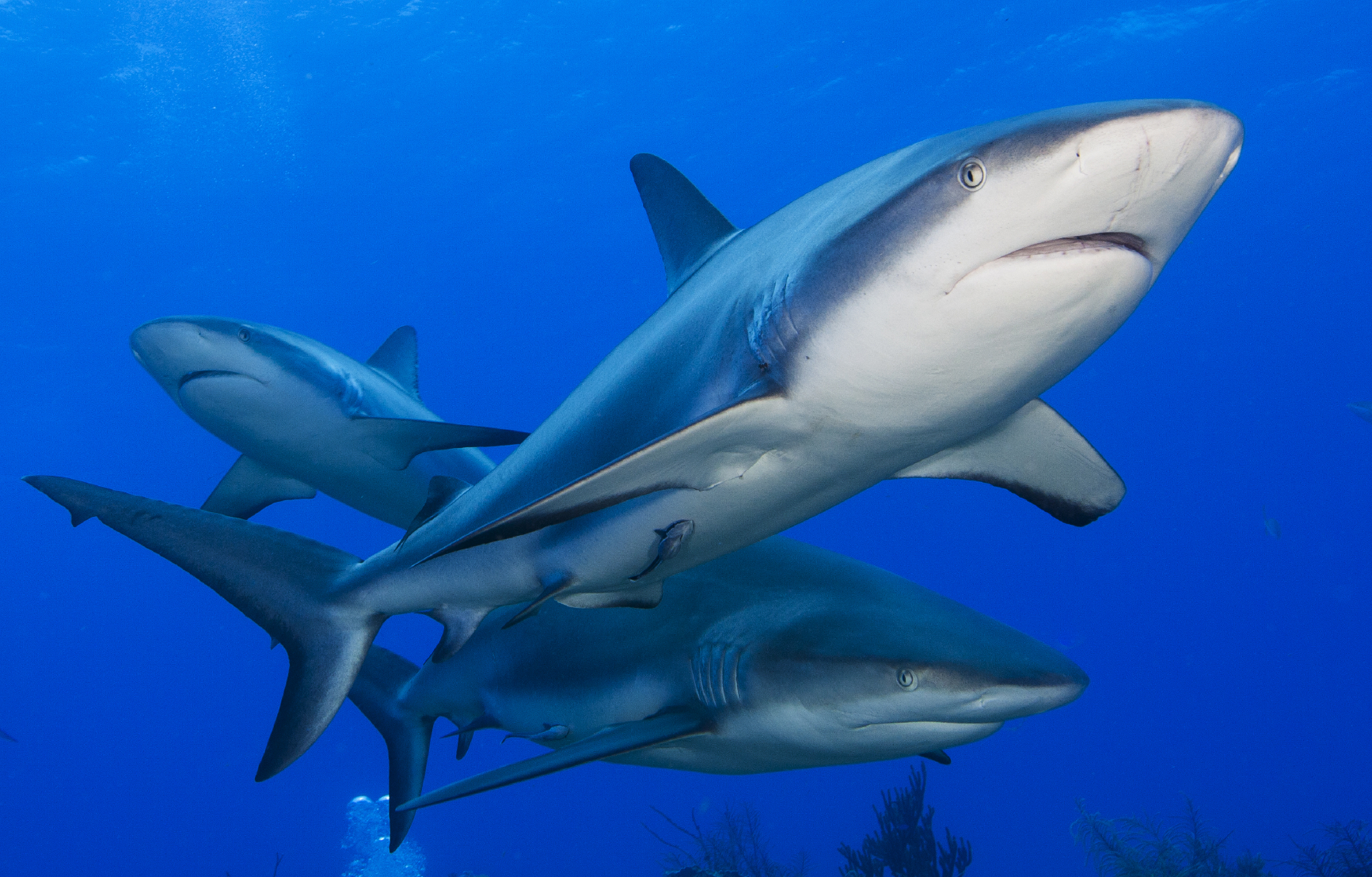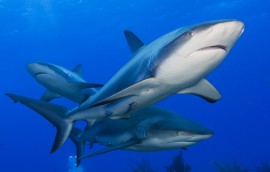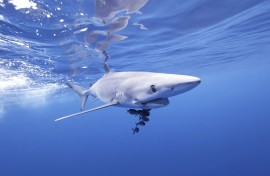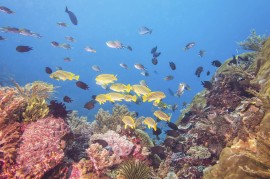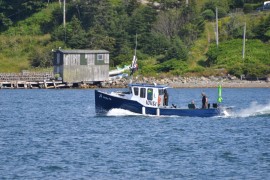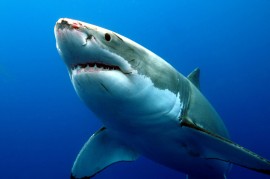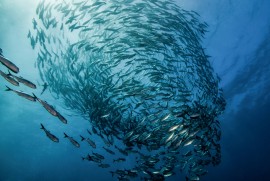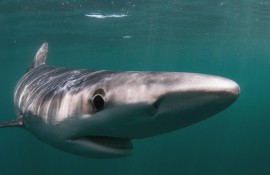Blue shark (Prionace glauca) habitat associations with bathymetric variation
Blue shark (Prionace glauca) habitat associations with bathymetric variation The blue shark (Prionace glauca) is the most frequently caught pelagic shark in the Atlantic Ocean. In the NW Atlantic, blue sharks are caught mainly as bycatch in longline fisheries, with estimated catches exceeding 84,000 tonnes a year. Tuna and swordfish are primary fisheries which catch… DetailsThe effects of temperature on spatial patterns of trophic control in large marine ecosystems
The effects of temperature on spatial patterns of trophic control in large marine ecosystems Marine ecosystems may be structured according to resource availability (“bottom-up” control), or by predation (“top-down” control). Recent studies have found that temperature is a particularly strong correlate of trophic control, following a non-linear relationship with resource control dominant in areas of… DetailsInteractions between the Galapagos Marine Reserve and Tuna Fisheries in the Eastern Tropical Pacific
Interactions between the Galapagos Marine Reserve and Tuna Fisheries in the Eastern Tropical Pacific Marine protected areas (MPAs) are recognized as a powerful tool for both conservation and fisheries management. It is well established that marine ecosystems benefit from protected areas in terms of higher density, biomass, and species richness of adult and juvenile fishes… DetailsEvaluating the feasibility of switching to catch-and-release shark derbies in Nova Scotia: fisher and public opinions, legislation, and policy
Evaluating the feasibility of switching to catch-and-release shark derbies in Nova Scotia: fisher and public opinions, legislation, and policy Many derbies around the world use catch-and-release rather than catch-and-kill as a method for game fishing. Given that sharks are an important part of the marine ecosystem and their populations are declining worldwide, effective conservation and… DetailsTrends of shark catch rates in the Southern Atlantic
Trends of shark catch rates in the Southern Atlantic My Ph.D. research with Dr. Rosangela Lessa (UFRPE) and Dr. Boris Worm (Dalhousie University) focuses on life history patterns and vulnerability of pelagic sharks exploited by longline fisheries in South America. Rodrigo is also collaborating with the Shark Baselines Project (Dr. Francesco Ferretti, Stanford University, Lenfest… DetailsEngineering a population balance model for long-term fish stock prediction
Engineering a population balance model for long-term fish stock prediction My PhD project aims to develop and implement an age-structured, spatially explicit model to predict the long-term development of fish stocks. The model tries to combine the merits both of individual based models and classical population dynamics models, which treat entire fish stocks as their… DetailsAcoustic tracking of juvenile blue sharks (Prionace glauca) in Nova Scotia waters from receivers positioned near N.S. offshore oil and gas platforms
Acoustic tracking of juvenile blue sharks (Prionace glauca) in Nova Scotia waters from receivers positioned near N.S. offshore oil and gas platforms In 2013, the Deep Panuke E&T and R&D Fund supported Dalhousie University’s Ocean Tracking Network proposal to conduct acoustic telemetry work in the Deep Panuke offshore oil and gas development region of Canada’s… DetailsOperationalizing big data for ocean conservation
MPAs have long been recognised as a tool to protect marine biodiversity. Through temporal and/or spatial closures and management of designated areas, the maintenance and recovery of special ecosystems, processes, habitats and species and their sustainable use and conservation are promoted. Damaging practises such as destructive fishing methods and other harmful human activities are excluded in order to create protected zones for species’ reproduction and growth. Today most MPAs can be found in coastal waters worldwide whereas large MPAs in offshore waters beyond the national jurisdiction are still rare.
For my PhD project I focus on how large Marine Protected Areas (MPAs) influence ecosystem services and fisheries activities. I am looking at effects of the establishment of MPAs on fishing fleet behaviour such as a possible relocation of fishing efforts to other areas or to the borders of MPAs to benefit from spillover effects. It is important to understand the fishermen’s reactions to protected areas in order to develop a functional network of High Seas MPAs protecting marine resources from overexploitation.
I am participating in the German-Canadian Transatlantic Ocean System Science and Technology (TOSST) graduate programme which addresses key issues facing the North Atlantic under three distinct themes: Seafloor Structures, 4D water mass dynamics and Ecosystem Hotspots. The graduate programme is hosted by Dalhousie University in Halifax, Canada and the GEOMAR as well as Christian-Albrechts University in Kiel, Germany.
Details